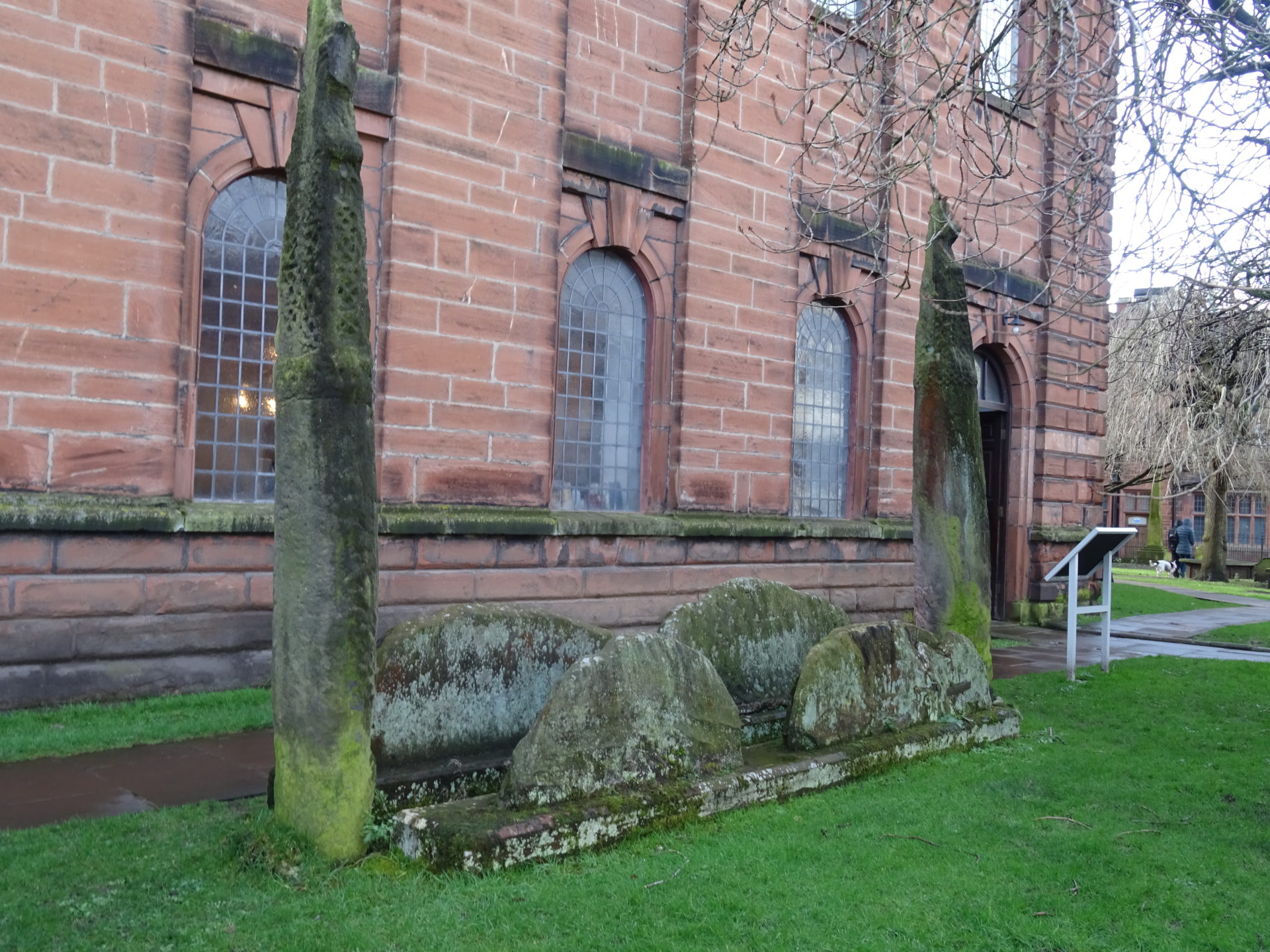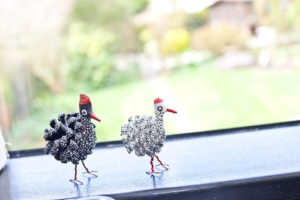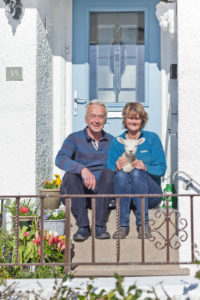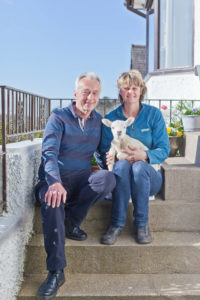St Andrew’s Church Penrith:
The Parish church was established in 1133 and was rebuilt in 1722 after a fire had damaged the earlier building. The oldest part of the present building is the 13th/14th-century tower.
The architect is believed to have been Nicholas Hawksmoor, pupil and colleague of Sir Christopher Wren.
The church contains portraits of the father and mother of Richard III in stained glass.
Outside Penrith’s Parish Church of St Andrew are three sandstone objects.
The largest is known as the ‘Giants Grave’.
It is thought to mark the grave of Owen Caesarious, King of Cumbria from 970 to 937.
Giants Grave and two stone pillars (obviously ancient cross-shafts) stand at the head and foot of the grave with four other stones (hogbacks) at the sides.
They are now thought to be pre-Norman and the earliest remains of Christianity in Penrith.
Nearby is the ‘Giants Thumb’, an old Norse single cross dated around 920 and believed to be erected by Owen Caesarious as a memorial to his father. It is so called from two holes at the top, said to be the size of the giants thumb.
The stones are covered with pre-Norman carvings.
If you are looking for a holiday in the South Lakes area, Lothlorien in Grange-over-Sands has easy access to Penrith by the M6 motorway.
For enquiries about Lothlorien holiday cottage click here.























